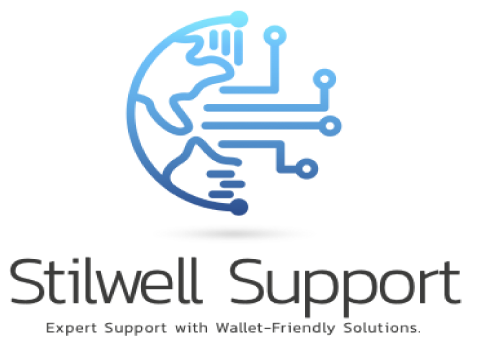Most businesses experience a transition to remote work during holiday office closures, which can create unexpected security vulnerabilities. As you navigate this period, it’s important to ensure that your systems and data remain protected. This guide will provide you with key practices you should implement to enhance your remote access security, safeguarding your organization against potential threats while maintaining productivity and compliance.
Key Takeaways:
- Ensure all devices are updated with the latest security patches before the holiday break.
- Utilize a secure VPN for remote access to company resources.
- Enforce strong password policies and two-factor authentication for all remote connections.
Understanding Remote Access Security
When your team operates remotely, understanding remote access security becomes vital to safeguarding sensitive data. Implementing the right security measures enhances your organization’s defense against cyber threats, especially during holiday office closures when chances of unmonitored access increase. Your remote access policies should incorporate multi-factor authentication, secure connections, and comprehensive employee training to mitigate risks effectively.
Importance of Securing Remote Connections
Securing remote connections protects your organization’s assets, ensuring that unauthorized users can’t access sensitive information. With the rise in cyber attacks targeting remote workers, safeguarding access points becomes critical to maintaining data integrity and compliance with industry regulations. By prioritizing security measures, you enhance the overall trustworthiness and resilience of your operational framework.
Common Threats During Holiday Closures
Holiday closures often see a spike in cyber threats, including phishing attacks, malware infections, and unsecured networks. As employees work remotely, the absence of direct supervision can lead to lapses in security practices. Hackers exploit these vulnerabilities, making it imperative to reinforce security protocols during this period.
Typically, holiday closures witness a notable uptick in phishing attacks, which can increase by up to 47%, as cybercriminals target employees who are less vigilant during this festive time. Additionally, malware can infiltrate through compromised devices connected to insecure networks, leading to potential data breaches. Moreover, employees might use personal devices for work without the necessary protections, leaving critical company data exposed. Consequently, addressing these threats requires continuous education on security practices and the implementation of strict access controls to minimize the risk of loss. These proactive measures are necessary to maintain a robust defense, especially when your organization is closed for business.
Best Practices for Secure Remote Access
To ensure secure remote access, implementing best practices is important. Use a multi-layered approach, including strong authentication methods, robust encryption protocols, and regular monitoring of network activity. Make sure your employees are trained on security awareness to recognize potential threats, and encourage the use of secure connections, such as VPNs, when accessing sensitive data remotely.
Implementing Strong Authentication Protocols
Utilize multi-factor authentication (MFA) to enhance security for remote access. By requiring multiple verification methods, such as a password and a temporary code sent to a mobile device, you significantly decrease the chances of unauthorized access. This adds another layer of protection for your sensitive information and systems.
Regular Software Updates and Patches
Keeping all software up to date is vital for maintaining security. Applying updates and patches ensures that known vulnerabilities are addressed, minimizing the risk of cyberattacks. Establish a regular update schedule to ensure that both operating systems and applications are current, thus strengthening your overall security posture.
Regular software updates and patches not only fix existing vulnerabilities but also typically include new security features that enhance your system’s resilience against emerging threats. According to a 2023 report by Cybersecurity Ventures, 60% of data breaches exploit known vulnerabilities that could have been patched. By prioritizing these updates, you protect not just individual devices but the integrity of your entire network. Automated tools can help manage this process, ensuring timely compliance without putting undue strain on your team.
User Awareness and Training
Your organization’s most significant asset in remote access security is its workforce. Equipping employees with knowledge about security risks is crucial; they should understand how their actions can impact your organization’s safety. Regular training sessions, updates on new threats, and providing easy-to-understand materials can help foster a security-conscious culture. Engaging employees in discussions about real-world examples of security breaches can deepen their understanding and prompt proactive behaviors.
Educating Employees on Security Risks
Educating your employees on the potential security risks associated with remote work is vital. They must be aware of the various threats, such as unsecured Wi-Fi networks, weak passwords, and data sharing mishaps. By clearly outlining these risks, you empower your team to recognize and mitigate dangers before they escalate into significant problems.
Phishing and Social Engineering Countermeasures
Countering phishing and social engineering requires you to provide your employees with practical strategies to identify and respond to these threats. Training sessions should include examples of phishing emails and scenarios demonstrating social engineering tactics. Regularly testing your staff with simulated attacks can also reinforce learning and help maintain vigilance against ever-evolving fraudulent techniques.
For effective phishing and social engineering countermeasures, incorporate real-life case studies that illustrate successful attacks and their consequences. Use tangible examples to highlight the signs of an attempted breach, such as requests for sensitive information or unexpected communications from seemingly reputable sources. Encourage your employees to verify any unusual requests with a secondary communication method, like calling the requester directly. Conducting routine phishing simulations and fleshing out security policies on reporting suspicious activities can create an environment of accountability, making it the norm to question unexpected communications.
Monitoring and Incident Response
Continuous monitoring and swift incident response are fundamental to maintaining your organization’s security posture during holiday office closures. With employees accessing critical systems remotely, real-time visibility into network activities allows you to detect anomalies and respond to potential threats before they escalate. Ensuring that you have the right tools and protocols in place will help safeguard your operations during these vulnerable times.
Setting Up Effective Monitoring Systems
Implement comprehensive monitoring systems that utilize advanced analytics and threat detection tools to constantly analyze network traffic and user behavior. These systems can generate alerts based on predefined anomalies, helping you to identify unauthorized access or unusual patterns. Incorporating tools like Security Information and Event Management (SIEM) can enhance your ability to scrutinize activity across multiple points, ensuring comprehensive oversight of your remote access environment.
Responding to Security Incidents Promptly
Your response time to security incidents can significantly diminish the potential damage. Establish a well-defined incident response plan that outlines roles, responsibilities, and procedures. Practice running through incident scenarios with your team to ensure everyone is prepared to act swiftly when an actual incident occurs, minimizing downtime and data loss.
In your incident response plan, detail the immediate actions that should be taken when a threat is detected, including isolating affected systems and notifying relevant stakeholders. Specify communication protocols to manage internal and external messaging effectively. Leveraging automation tools can expedite initial response efforts, allowing your team to focus on investigation and mitigation strategies. Regularly reviewing and updating this plan ensures your organization remains adaptable to new threats and evolving remote work practices.
Device Management During Holidays
During the holidays, effective device management is vital to ensure your organization remains secure while employees take time off. This period often sees an increase in shadow IT as employees may use personal devices to access company resources. Establishing clear policies and procedures during this time can prevent unauthorized access and potential data breaches, safeguarding both company and personal information.
Guidelines for Personal Devices
When employees use personal devices for work during the holidays, enforcing security protocols is imperative. You should require that these devices have updated security software, strong passwords, and encrypted connections to mitigate risks. Regular check-ins can keep employees informed about necessary updates and potential vulnerabilities.
Remote Access for Company Devices
Remote access to company devices should be tightly controlled, especially during the holiday break. Ensure that employees use secured virtual private networks (VPNs) and access company systems only through authenticated methods to limit exposure to cyber threats.
For instance, implementing multi-factor authentication (MFA) adds an extra layer of security, making it more difficult for unauthorized users to gain access. Additionally, you might consider restricting access to sensitive data based on user roles and continuously monitoring login attempts to detect anomalies. Regularly reviewing and updating access permissions during this holiday season can significantly reduce risks and enhance your overall digital security.
Compliance and Regulatory Considerations
As you navigate the complexities of remote access during holiday office closures, understanding compliance and regulatory requirements is vital for safeguarding your organization. Non-compliance can lead to hefty fines, legal issues, and reputational damage. You must ensure your policies align with laws and regulations relevant to your industry and geographical location, such as GDPR, HIPAA, or CCPA.
Understanding Data Protection Laws
You need to familiarize yourself with the data protection laws that apply to your organization, as these govern how you collect, store, and share personal information. Laws like GDPR impose strict requirements on data handling, emphasizing the importance of obtaining consent and ensuring data security. Awareness of these laws helps you avoid breaches and associated penalties.
Ensuring Adherence to Security Standards
Adhering to established security standards is necessary for maintaining the integrity of your remote access initiatives. Standards such as ISO 27001 and NIST provide frameworks for risk management, ensuring that your security protocols meet necessary benchmarks. Implementing these standards not only strengthens your security posture but also boosts stakeholder confidence in your operations.
Your organization should conduct regular audits and assessments aligned with relevant security standards to identify vulnerabilities in your remote access process. For instance, employing vulnerability scanning and penetration testing helps detect weaknesses before they can be exploited. Using a risk management framework can guide you in prioritizing controls based on asset criticality and threat landscape, ensuring that your security measures evolve with emerging risks.
Conclusion
Following this, it’s necessary to prioritize remote access security during holiday office closures. You should implement robust security measures to protect your devices and sensitive data while working remotely. By adopting practices such as using VPNs, updating software, and educating yourself on potential threats, you can ensure a secure work environment. For additional insights, check out How to Protect Against Cybersecurity Threats This Holiday.
FAQ
Q: What security measures should be in place for remote access during holiday office closures?
A: It is important to implement strong password policies, enable multi-factor authentication (MFA), and ensure that all remote access tools are up to date. Additionally, establishing secure virtual private networks (VPNs) and restricting access based on job roles will enhance remote access security.
Q: How can employees ensure their devices are secure when working remotely during holidays?
A: Employees should keep their operating systems and software updated, use antivirus programs, and avoid connecting to public Wi-Fi without a VPN. Regularly backing up data and being cautious with email links and attachments are also necessary to maintaining device security.
Q: What steps should be taken if a security breach is suspected while working remotely?
A: If a security breach is suspected, immediately disconnect the affected device from the internet, report the issue to IT support, and follow the organization’s incident response plan. It is also advisable to change passwords and monitor accounts for any unauthorized activity.



